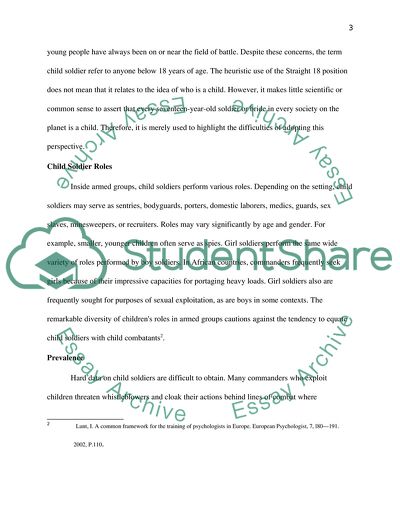Cite this document
(Childrens Roles as Child Soldiers Case Study Example | Topics and Well Written Essays - 2250 words, n.d.)
Childrens Roles as Child Soldiers Case Study Example | Topics and Well Written Essays - 2250 words. https://studentshare.org/anthropology/1848208-childrens-roles-as-child-soldiers
Childrens Roles as Child Soldiers Case Study Example | Topics and Well Written Essays - 2250 words. https://studentshare.org/anthropology/1848208-childrens-roles-as-child-soldiers
(Childrens Roles As Child Soldiers Case Study Example | Topics and Well Written Essays - 2250 Words)
Childrens Roles As Child Soldiers Case Study Example | Topics and Well Written Essays - 2250 Words. https://studentshare.org/anthropology/1848208-childrens-roles-as-child-soldiers.
Childrens Roles As Child Soldiers Case Study Example | Topics and Well Written Essays - 2250 Words. https://studentshare.org/anthropology/1848208-childrens-roles-as-child-soldiers.
“Childrens Roles As Child Soldiers Case Study Example | Topics and Well Written Essays - 2250 Words”. https://studentshare.org/anthropology/1848208-childrens-roles-as-child-soldiers.


